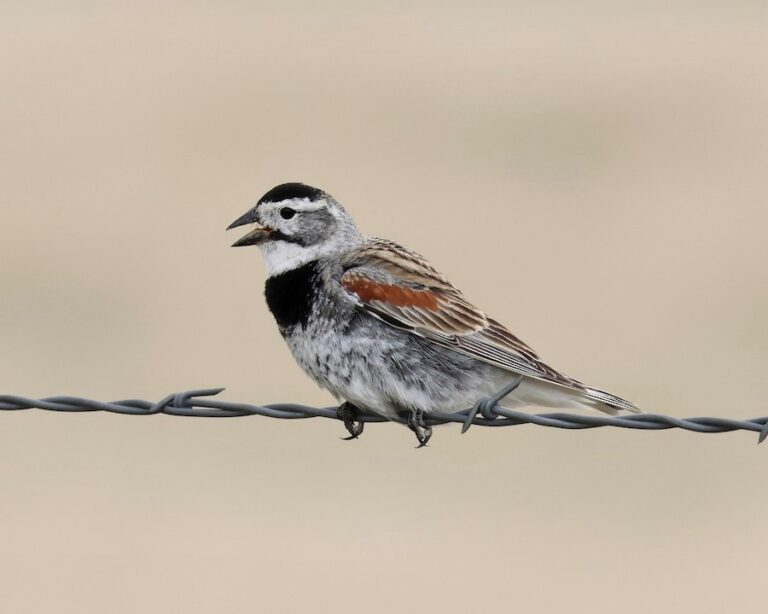Birdfinding.info ⇒ Uncommon, localized, and seldom seen without a dedicated effort. Locally common on some parts of its breeding grounds, which are a small remnant of their historical extent. Accessible locations with robust breeding populations include: the western sector of the Pawnee National Grassland in Colorado; Sand Creek Road (southwest of Laramie), Wyoming; the Wheatland-Harlowton area in south-central Montana; the Trans-Canada Highway northwest of Suffield, Alberta; and the Onefour area of southeasternmost Alberta and adjacent Saskatchewan. In winter, large flocks occur in barren plains of the Texas Panhandle and adjacent areas: e.g., Hansford County (north of Amarillo) and Lubbock Airport. In southcentral Texas, regular wintering sites include Granger Lake (northeast of Austin) and Knippa (east of Uvalde). In southeastern Arizona, Kansas Settlement in the Sulphur Springs Valley south of Willcox has been a consistent site.
Thick-billed Longspur
Rhynchophanes mccownii
Breeds on the high plains from Alberta to Colorado; winters in the southwestern U.S. and north-central Mexico.
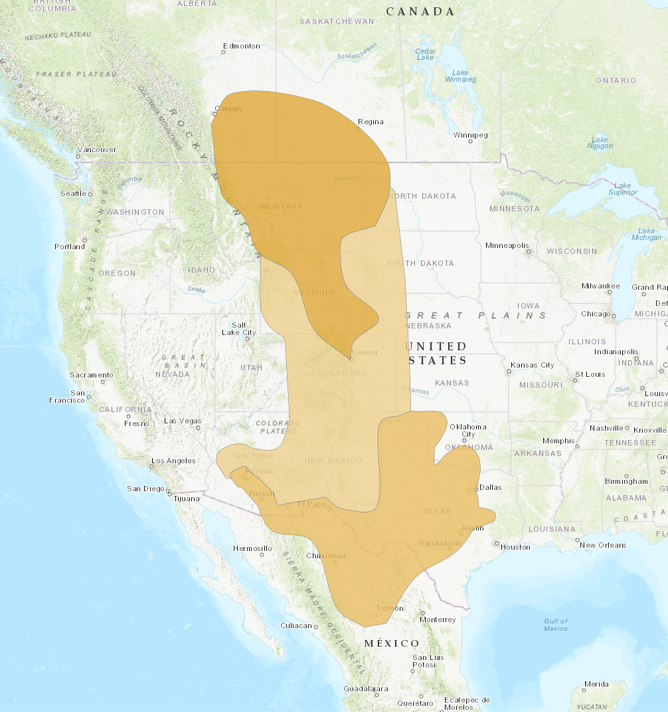
Approximate distribution of the Thick-billed Longspur. © BirdLife International 2021
Breeding. Breeds in open short-grass prairies from southeastern Alberta and southwestern Saskatchewan south through Montana, northern and eastern Wyoming, and western Nebraska to central-eastern Colorado. Mainly east of the Rocky Mountains, but extends into intermontane valleys of Montana northwest of the Yellowstone uplift. Formerly bred farther east into North Dakota and South Dakota, where a few breeding sites remain active along the western borders of both states.
Nonbreeding. Winters mainly on large, flat expanses of barren open ground, such as dry lakebeds. Winter range extends from eastern Colorado and western Kansas south through southern and eastern New Mexico, southern Arizona, western Oklahoma, western and central Texas, and the central plateau of Mexico south to northern Durango. Small numbers regularly winter west of the usual range, from the Great Basin of Utah and Nevada to southern California and western Arizona.

Breeding Bird Survey Abundance Map: Thick-billed Longspur. U.S. Geological Survey 2015
Movements. Spring migration is relatively early and brief, from mid-March to mid-April. Southbound migration spans from August into October.
Casual as a fall and winter vagrant west to southern Oregon and northern and central California. More exceptional in the Pacific Northwest and the southeastern U.S. There is a single winter record from Massachusetts.
Spring vagrants are occasionally found east of the breeding range, exceptionally to the Great Lakes (with three May records from the southern shore of Lake Superior), and at scattered locations in western and central Canada, including the interior of British Columbia, the southern Yukon (Watson Lake; June 16, 2022), north-central Manitoba, and northwestern Ontario.
Identification
The Thick-billed Longspur’s tail pattern—mostly white with a dark inverted T—is diagnostic in all plumages. The male’s breeding plumage is striking and instantly recognizable. Other plumages are mostly plain and nondescript, apart from their unique tail pattern. At rest, its wings often droop down along its flanks, exposing the rump.

Thick-billed Longspur, male in breeding plumage, with tail folded but still showing mostly white tail feathers. (Pawnee National Grassland, Weld County, Colorado; May 5, 2016.) © Phillip Edwards
Males in breeding plumage are mostly gray with a black crown, white face and throat, black malar stripe, black bib, black bill, and a bold rufous wingbar. The upperparts are tan-brown and heavily streaked.
Nonbreeding males typically show a muted version of the breeding plumage, with indistinct brown-and-tan facial markings and a mostly pink bill that often has a blackish tip. The upperparts and bold rufous wingbar remain essentially the same as in breeding plumage. The underparts are mostly gray, usually with some black on the chest.
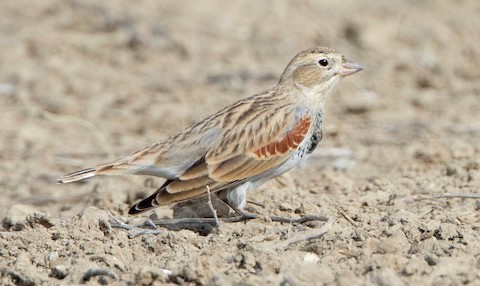
Thick-billed Longspur, male in nonbreeding plumage showing characteristic droop-wing posture. (Perris, California; December 6, 2015.) © Mark Chappell
Females and immatures are brown and streaked above and pale-gray below, with a mostly pinkish (often black-tipped) bill and a washed-out, indistinct head pattern. They sometimes show subtle blackish smudges on the chest, but are usually unstreaked below—unlike other female and immature longspurs.
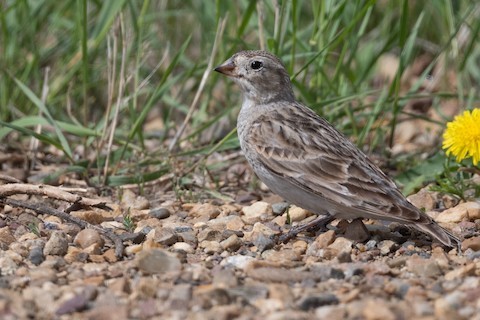
Thick-billed Longspur, female showing plain gray-and-brown plumage—note the thick appearance of the bill, which appears mostly blackish in the breeding season. (Rock Creek Trail, Grasslands National Park, Saskatchewan; May 15, 2024.) © Amanda Guercio
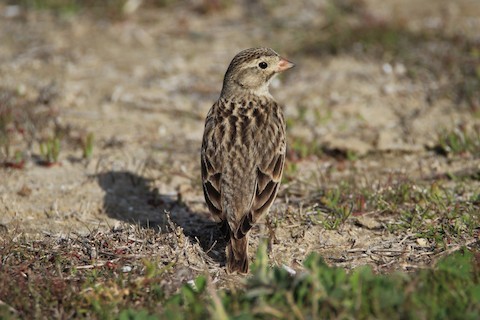
Thick-billed Longspur, female showing streaked brown upperparts—with the tail folded, the dark central tail-feathers completely conceal the distinctive pattern. (Fiesta Island, San Diego, California; March 18, 2021.) © Patrick Sysiong
The “inverted T” tail pattern is distinctive, but not readily detectable when the tail is folded. When spread, the tail is mostly white except for the two central feathers, which are brown. The outermost feathers are all-white, or nearly so. The rest of the tail-feathers are white with black tips.
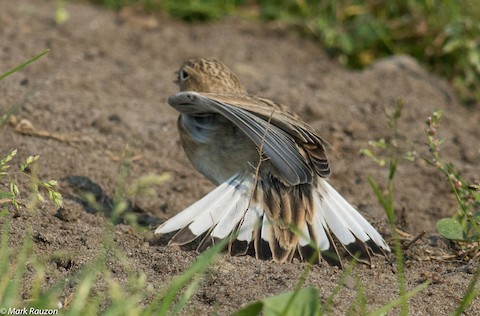
Thick-billed Longspur, immature male with tail fully fanned out, showing the distinctive “inverted T” tail pattern with brown central tail feathers and black terminal band on otherwise all-white feathers. (Crissy Field, Presidio, San Francisco, California; October 12, 2017.) © Mark Rauzon
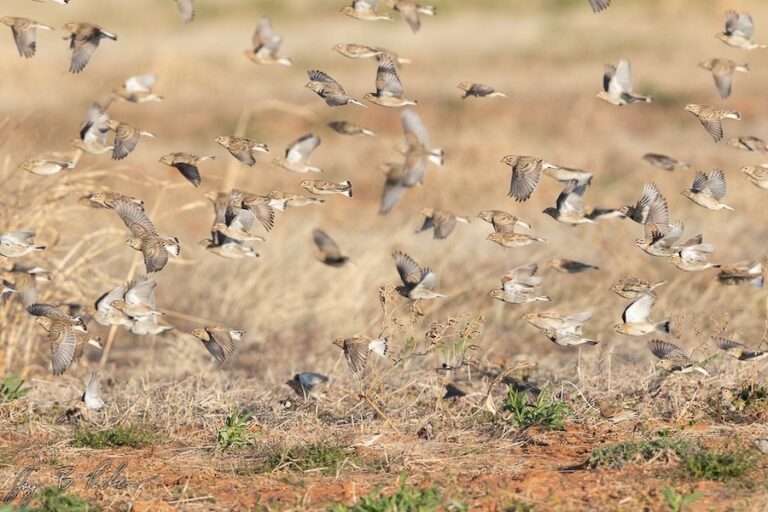
Thick-billed Longspur flock in flight, with several individuals showing the distinctive “inverted T” tail pattern. (Merkel, Texas; March 4, 2019.) © Jay Packer
Juveniles are heavily streaked above and partly streaked below. Older immature plumages resemble adult females: conspicuously streaked above, but nondescript except for the tail pattern.
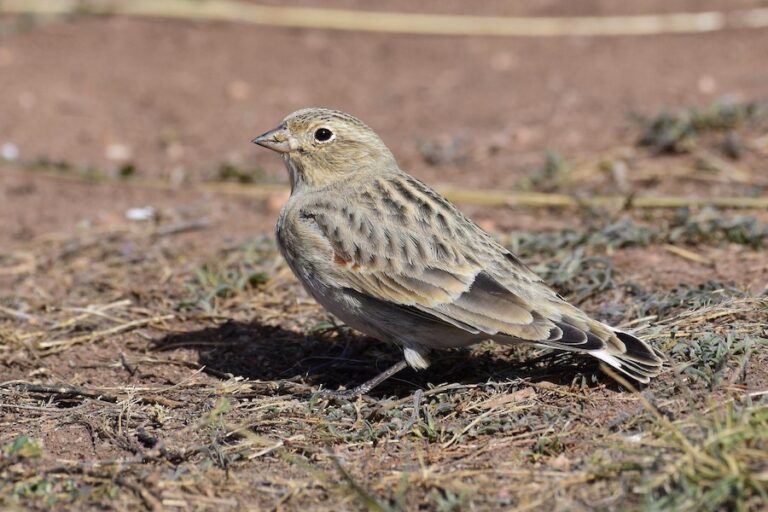
Thick-billed Longspur, immature showing overall nondescript appearance, with a sliver of its tail pattern and a tiny rufous patch visible on the wing. (Manitou Lake, Colorado; October 12, 2019.) © David de Rivera Tønnessen
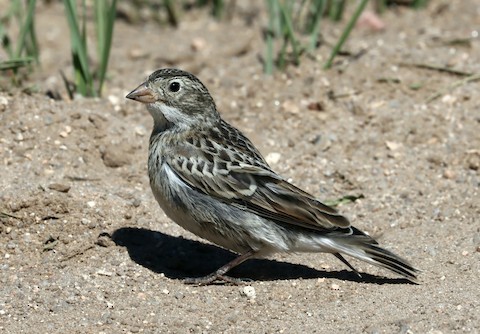
Thick-billed Longspur, juvenile. (Calhan, Colorado; June 25, 2023.) © John Drummond
Notes
Monotypic species and genus.
The Thick-billed Longspur owns the dubious distinction of being the first bird species whose original English name was changed because it memorialized an individual whose legacy of race-based oppression of other humans was adjudged to be so offensive as to merit erasure from the ornithological nomenclature. John Porter McCown (August 19, 1815 – January 22, 1879) was a general in the Confederate Army who renounced his commission in the U.S. Army and fought to perpetuate slavery. He was also a birdwatcher who published a paper on the Greater Roadrunner (Geococcyx californianus) and collected the type specimens of three species, including one that was named in his honor: Rhynchophanes mccownii. In 2020, the American Ornithological Society formally changed the English name from McCown’s Longspur to Thick-billed Longspur.
More Images of the Thick-billed Longspur
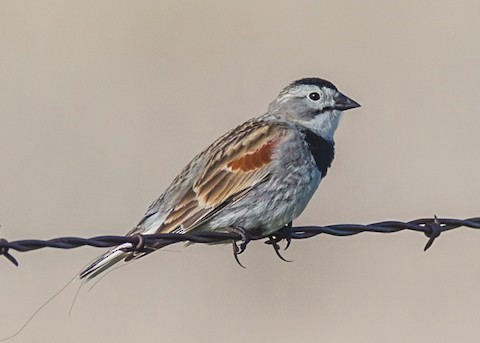
Thick-billed Longspur, male in breeding plumage. (Mission Lake, Montana; May 14, 2016.) © BJ Worth
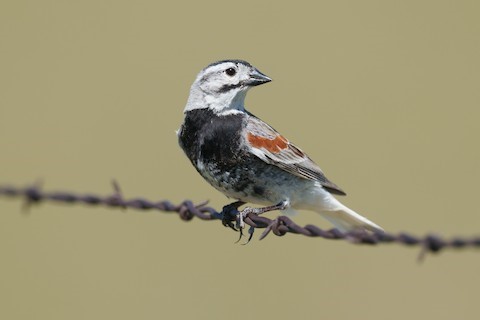
Thick-billed Longspur, male in breeding plumage. (Harlowton, Montana; June 13, 2024.) © Jeff Hapeman
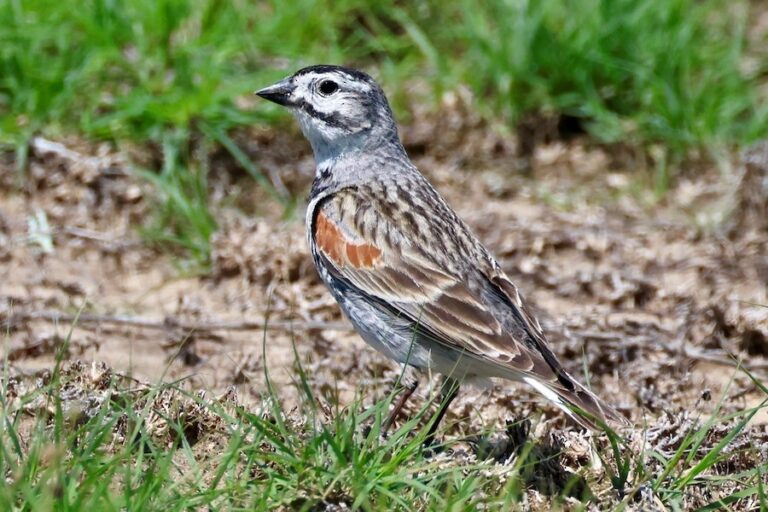
Thick-billed Longspur, male in breeding plumage. (Pawnee National Grassland, Weld County, Colorado; June 13, 2023.) © Phil Lehman
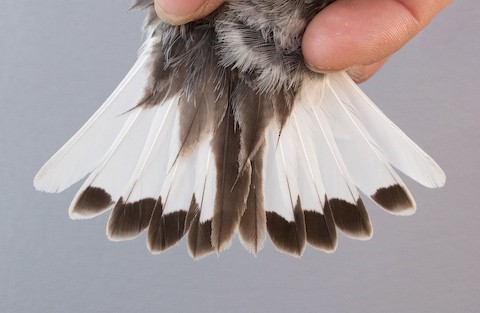
Thick-billed Longspur, male in breeding plumage with tail fully fanned out, showing inverted T pattern—white with dark central feathers and a narrow black terminal band. (Sage Creek Provincial Grazing Reserve, Bain, Alberta; June 28, 2023.) © Nicole Richardson
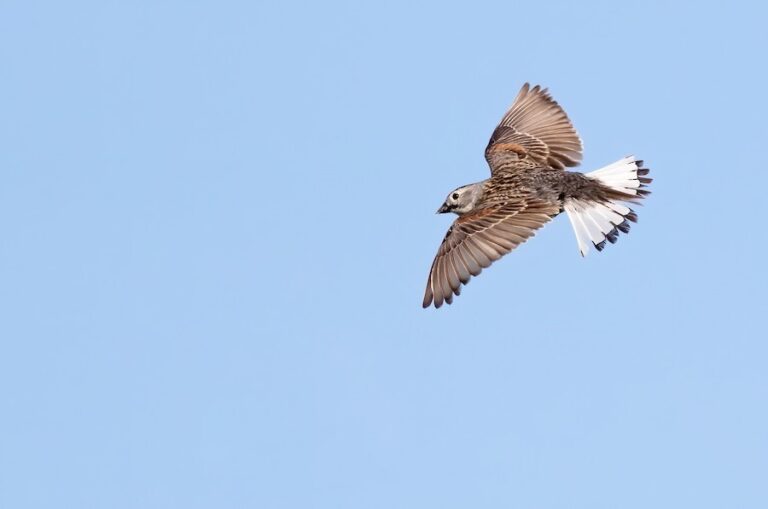
Thick-billed Longspur, male in breeding plumage with tail fully fanned out, showing inverted T pattern—white with dark central feathers and a narrow black terminal band. (Range Road 105, Ralston, Alberta; June 9, 2020.) © Joachim Bertrands
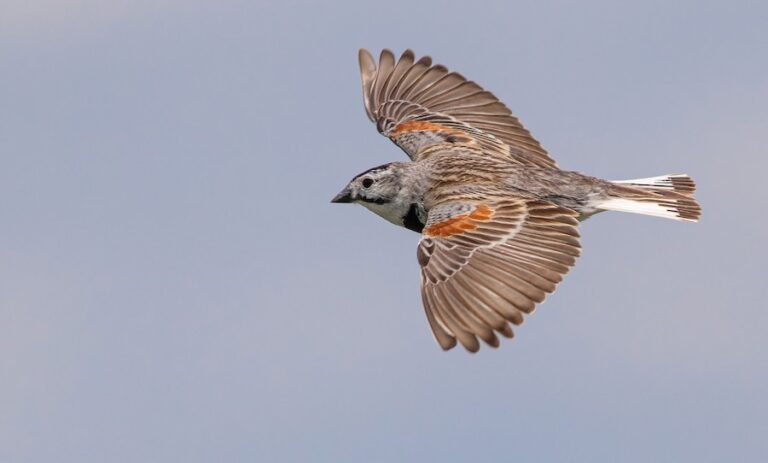
Thick-billed Longspur, male in breeding plumage with tail partly spread, showing a dark triangle—in this posture, reminiscent of Chestnut-collared Longspur’s tail pattern. (Pawnee National Grassland, Weld County, Colorado; June 13, 2023.) © George Armistead / Hillstar Nature
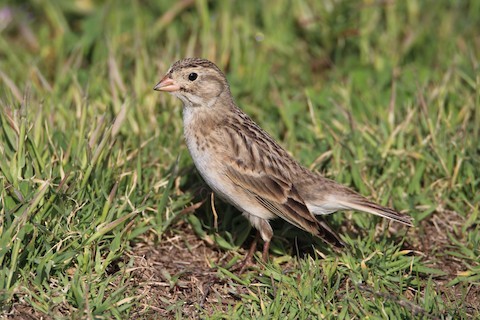
Thick-billed Longspur, female with wings drooped down in somewhat characteristic posture. (Fiesta Island, San Diego, California; March 18, 2021.) © Patrick Sysiong
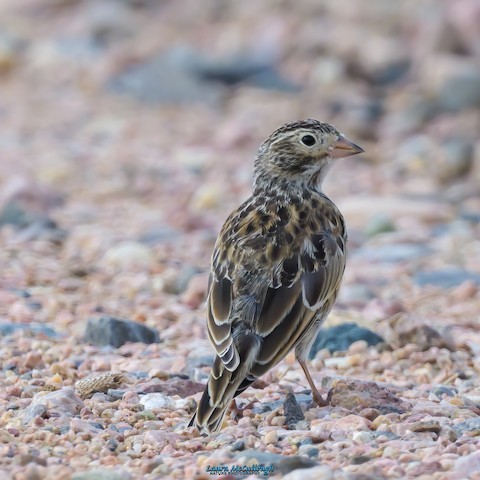
Thick-billed Longspur, juvenile. (Pawnee National Grassland, Weld County, Colorado; August 20, 2023.) © Laura McCullough
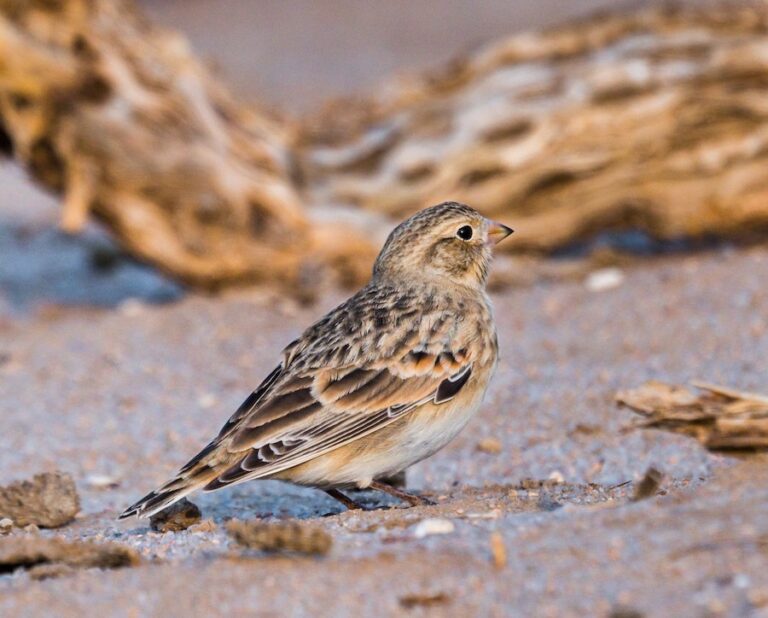
Thick-billed Longspur, immature. (Chico Basin Ranch, El Paso County, Colorado; September 19, 2020.) © Jim Merritt
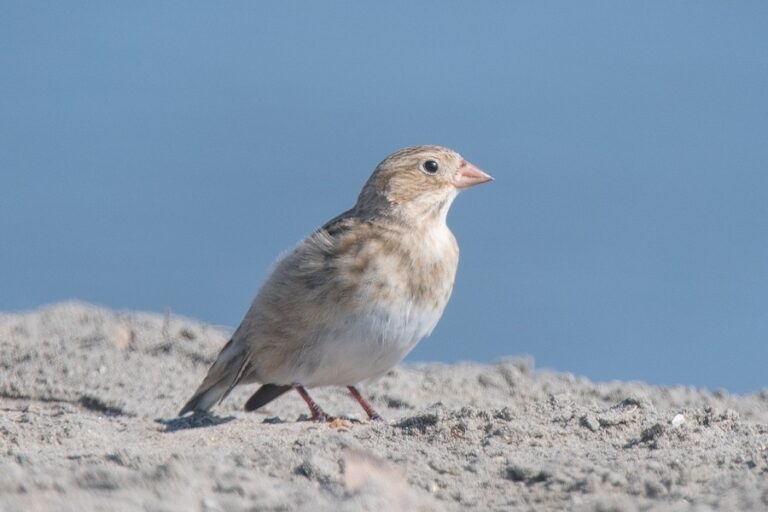
Thick-billed Longspur, female—a pale individual. (Crown Point, San Diego, California; November 6, 2018.) © Nancy Christensen
References
Alderfer, J., and J.L. Dunn. 2021. National Geographic Complete Birds of North America (Third Edition). National Geographic Society, Washington, D.C.
BirdLife International. 2021. Rhynchophanes mccownii. The IUCN Red List of Threatened Species 2021: e.T22721025A137367734. https://dx.doi.org/10.2305/IUCN.UK.2021-3.RLTS.T22721025A137367734.en. (Accessed July 29, 2024.)
eBird. 2024. eBird: An online database of bird distribution and abundance. Cornell Lab of Ornithology, Ithaca, N.Y. http://www.ebird.org. (Accessed July 29, 2024.)
Howell, S.N.G., and S. Webb. 1995. A Guide to the Birds of Mexico and Northern Central America. Oxford University Press.
Salt, W.R., and J.R. Salt. 1976. The Birds of Alberta. Hurtig Publishers, Edmonton, Alberta.
Sibley, D.A. 2014. The Sibley Guide to Birds (Second Edition). Alfred A. Knopf. New York.
Wikipedia. 2024. John P. McCown. https://en.wikipedia.org/wiki/John_P._McCown. (Accessed July 29, 2024.)
Xeno-Canto. 2024. Thick-billed Longspur – Rhynchophanes mccownii. https://xeno-canto.org/species/Rhynchophanes-mccownii. (Accessed July 29, 2024.)
